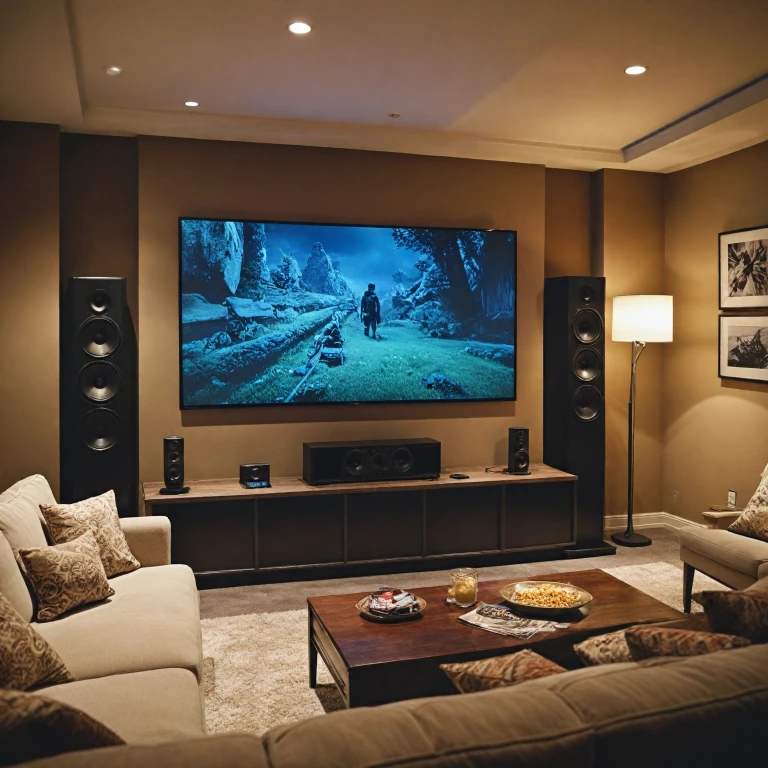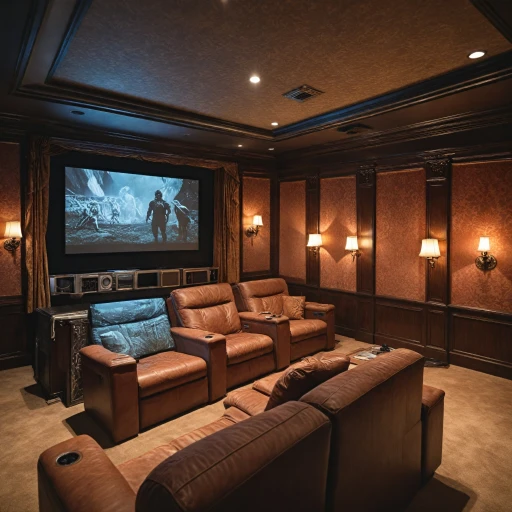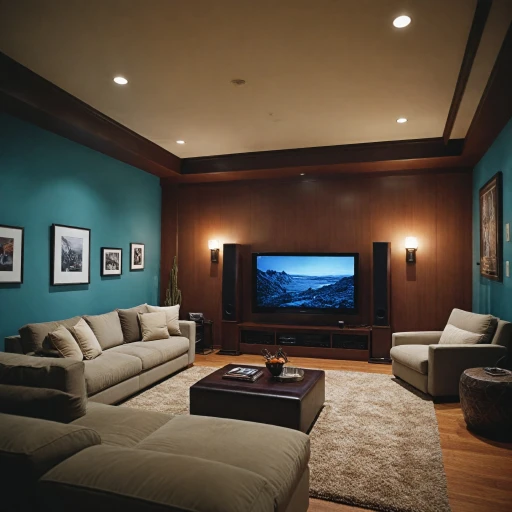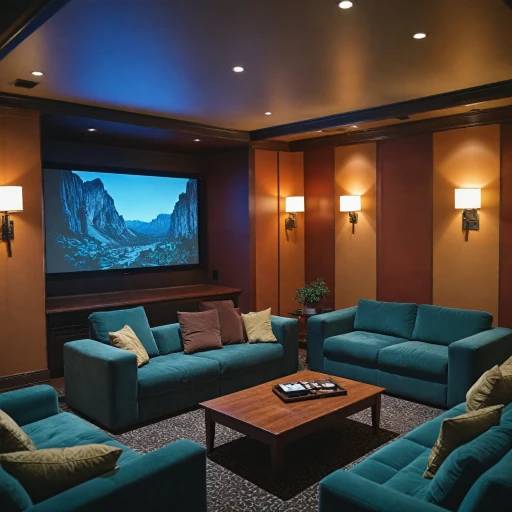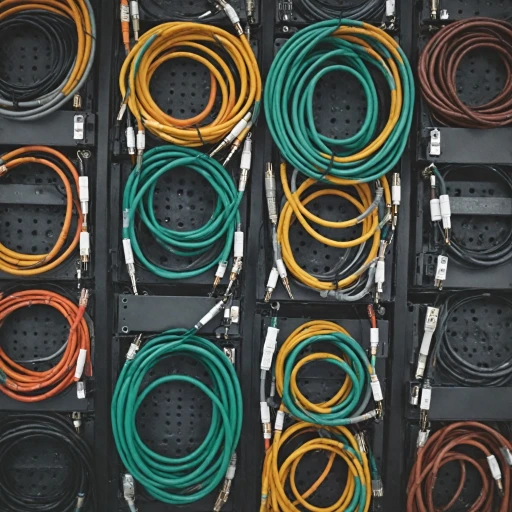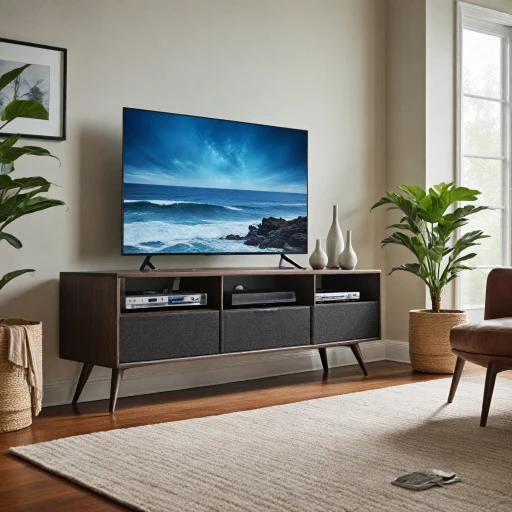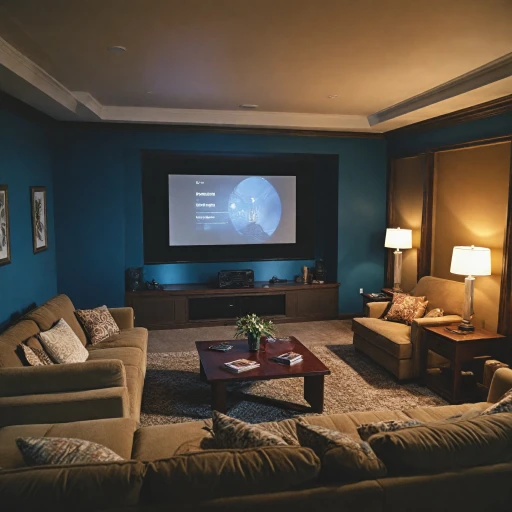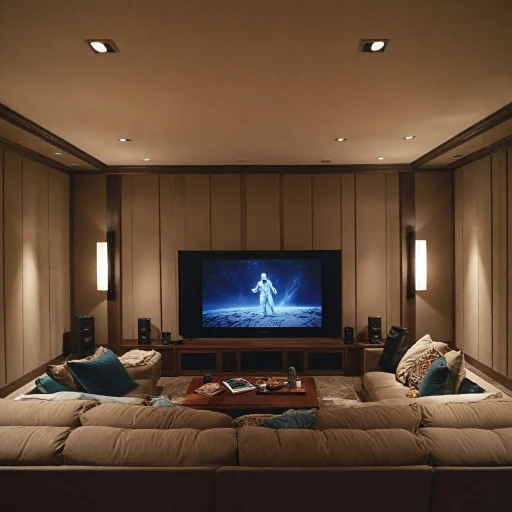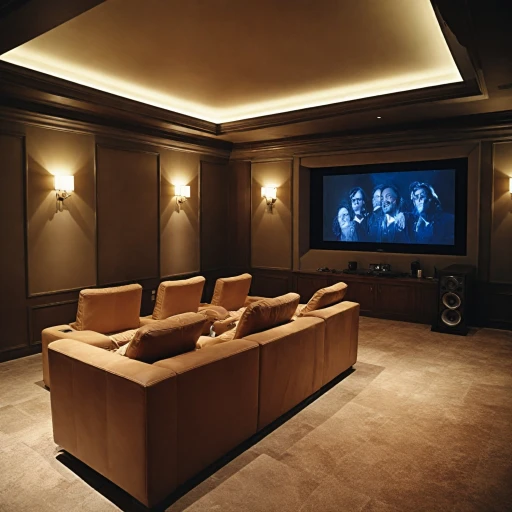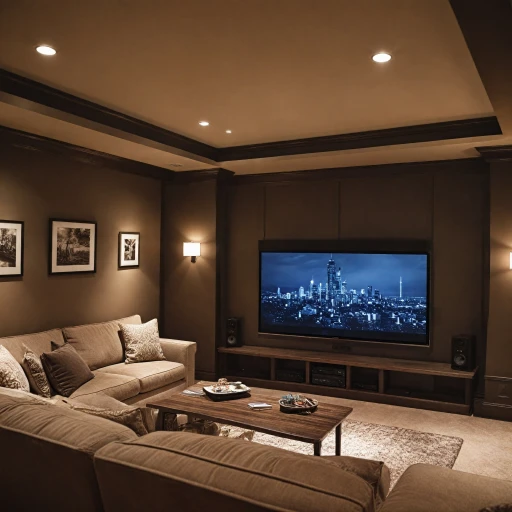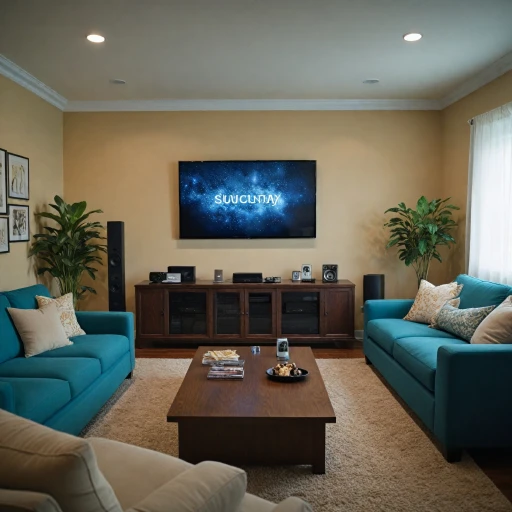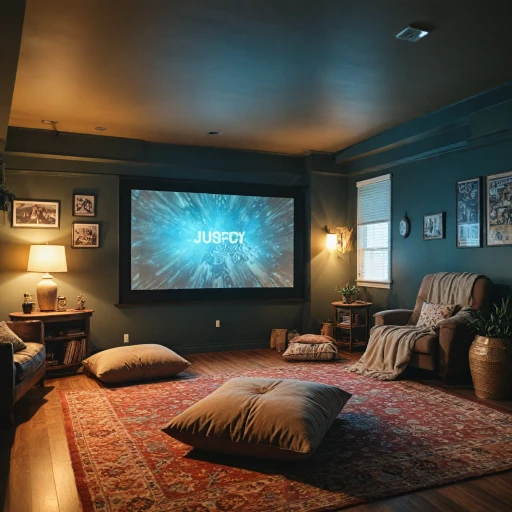
Understanding the Role of a Subwoofer in Home Theaters
The Impact of Subwoofers on Home Theater Audio
In a home theater setup, a subwoofer plays a crucial role in delivering that powerful, immersive audio experience we all crave. Unlike standard speakers that handle mid-to-high frequencies, subwoofers are designed to reproduce low frequency sounds. This includes the deep bass notes you feel when watching an action-packed movie. Just imagine the rumble during an explosion scene — it’s the subwoofer making that sound come alive.
The incorporation of a powered subwoofer elevates the sound by working alongside other speakers to fill your room with rich bass. When comparing subwoofers, understanding the dynamics of active and passive designs is vital. Active subwoofers come with an in-built amplifier, providing more control and often greater peak power output, whereas passive ones rely on an external amplifier.
Additionally, subwoofers can differ dramatically based on price and power capabilities. High-quality active subwoofers typically offer superior power handling and low distortion, making them a preferred choice for achieving cinematic effects. Throughout the month, keep an eye on sales as they often come with free shipping, thus ensuring that you get the best deal on your purchase.
Key Features to Look for in a Powerful Subwoofer
Essential Qualities to Seek in a Robust Subwoofer
Investing in a quality subwoofer can significantly impact your home theater experience, delivering deep, resonant bass that you can feel as much as you hear. While shopping for a subwoofer, keep in mind several key features that will ensure you achieve the best audio performance.- Power and Output: A powered, or active subwoofer, typically incorporates its own amplifier. This setup allows for better control over bass output, giving it the capability to handle low frequencies effectively. Look for models with appropriate power handling and RMS peak power ratings to ensure they can fill your space with sound.
- Frequency Response: The freq response of a subwoofer speaker indicates the range of bass it can produce. A broader frequency range will provide a richer, fuller sound. Aim for subwoofers that offer low frequency thresholds to best enhance those deep movie sound effects.
- Build and Design: Many consumers prefer subwoofers with a black finish to match their existing speaker systems. Consider the aesthetic and size to ensure it blends seamlessly into your setup.
- Peak Power Handling: This feature measures the maximum power output the subwoofer can manage without distortion. Higher peak power indicates the subwoofer's ability to reproduce dynamic soundscapes effectively.
- Price and Value: Weigh the subwoofer’s features against its price. With many on sale offering free shipping, it's possible to obtain a powerful subwoofer without breaking the bank. Comparing various models can help get the best subwoofer for your budget.
Integrating a Subwoofer with Your Home Theater Projector Setup
Seamlessly Connecting Subwoofers with Your Projector
Integrating your subwoofer with a home theater projector setup can transform your viewing experience into a more immersive and enriching encounter. This integration hinges on understanding the dynamics of sound and visuals working in harmony. One essential aspect is ensuring your subwoofer complements your existing speaker system. A powered subwoofer can be an excellent choice, offering its own built-in amplifier which handles the power intensive bass frequencies efficiently. This not only enhances the audio quality but also prevents stress on your other speakers, allowing them to deliver clearer high and mid frequencies. For smooth integration, consider using pre-out connections on your receiver to connect your subwoofer. This is crucial for maintaining sound clarity in surround sound setups. If you’re dealing with passive subwoofers, remember they need an external amplifier to power them. Here’s where comparing powered and passive subwoofers can help you decide which fits best in your setup without compromising sound quality or power handling. Your projector setup's connectivity can also influence sound performance. Selecting the right HDMI cord, for example, can be vital for seamless audio-visual synchronicity. Check out this comprehensive guide to ensure you're utilizing suitable cables. Scouting for the right subwoofer technology can also influence your experience. Active subwoofers are known for delivering deep, low frequencies with precision, making them a favored choice in live sound and pro audio. They're often equipped with advanced features such as adjustable crossover frequencies and phase controls, enhancing adaptability to various acoustic environments. Finding the best subwoofer for your home theater can sometimes come down to a balance of power, price, and features. Be sure to consider aspects like the subwoofer's frequency response (freq response), rms peak power ratings, and how it will fit into your desired sound dynamics. Always aim for top brands that provide reliable privacy policies and offer free shipping or sale prices to get the best value for your investment. By concentrating on these elements, your home theater experience can significantly improve, offering you richer, fuller soundscapes.Comparing Subwoofer Types: Active vs. Passive
Decoding the Differences Between Subwoofer Variants
When establishing your home theater setup, the type of subwoofer you choose can significantly affect the audio experience. Subwoofers are not one-size-fits-all, and understanding the distinction between active and passive types can guide your decision. Active subwoofers are self-contained units with a dedicated built-in amplifier, making them an ideal choice for ease of setup. They require only a connection to your audio source and a power outlet, eliminating the need for external amplifiers. This type of subwoofer is often preferred for home theater environments due to its simplicity and effective sound handling. Look for features like peak power and power handling capabilities when considering active subwoofers, as these factors heavily influence the depth and clarity of the bass output. On the other hand, passive subwoofers rely on an external amplifier to power the speaker. While they might require more intricate setup, they offer flexibility in terms of customizability and power, often appealing to audio enthusiasts who wish to fine-tune their theater sound systems. Passive subwoofers can be matched with a separate subwoofer amplifier to achieve your desired freq response and bass output, allowing for tailored sound experiences. When considering subwoofer options, factor in elements like space, budget, and sound preferences. Active subwoofers might carry a higher initial sale price, but they often include benefits such as free shipping and simpler integration into existing systems. If you're looking to add compare features between various models, check things like RMS peak output and low frequency response—key indicators of subwoofer prowess. In sum, whether you opt for an active or passive subwoofer, knowing the strengths and limitations of each variant will help you make a decision that enhances your home theater audio setup effectively.Troubleshooting Common Subwoofer Issues
Common Complaints: Understanding Subwoofer Malfunctions
Subwoofers are a crucial part of a home theater speaker system, adding depth and power to the sound by handling low frequencies. However, even the best subwoofer can experience issues. Understanding these common problems can help you troubleshoot effectively and keep the bass booming in your home audio setup.
The Silent Subwoofer
One of the most common issues is a subwoofer not producing sound. This could be due to power issues, loose connections, or incorrect settings. Ensure your powered subwoofer is properly plugged in, and check the amplifier settings both on the subwoofer itself and within your theater’s audio system. Verify that all cables are securely connected, and review any settings related to bass or low frequency within your receiver or sound bar, ensuring everything is in sync.
Distorted or Weak Bass
Distorted bass can be a result of pushing your subwoofer past its power handling capability or improper calibration. When a subwoofer is unable to handle the peak power needed, it can produce a "muddy" sound. Consider reducing the bass level or adjusting the speaker's frequency response settings. Comparing active vs. passive subwoofers might also give you insights into whether your current model is fulfilling your live sound needs.
Strange Sounds: Buzzes and Hums
Humming or buzzing sounds can be annoying and are usually caused by grounding issues or interference. Ensure that all audio components, including subwoofer amplifiers, are grounded properly. Identifying nearby electronic devices and maximizing distance might reduce interference. Additionally, swapping out cables that may have weakened over time could eliminate these frustrating sounds.
Underperformance Over Time
Subwoofers, like any audio equipment, can degrade with usage. If your subwoofer performance has lessened, routine maintenance like inspecting the speaker diaphragm for integrity and ensuring the enclosure is free from excess dust and debris can be beneficial. In some cases, seeking professional assistance may be the best option.
By understanding these issues and how they relate to your home theater's subwoofer, you can effectively maintain optimal bass performance. Recognizing when it's time to compare prices for an upgrade or a cable replacement during a sale price can ultimately keep your theater audio experience at its peak.
Future Trends in Subwoofer Technology
Exploring Advancements in Subwoofer Technology
To stay informed about the future trends in subwoofer technology, it's essential to consider the continuous innovations in both design and function that are reshaping the audio world. Let's delve into what the future holds. Increased Power EfficiencyRecent advances in subwoofer technology focus on improving power efficiency. With the development of more efficient subwoofer amplifiers, newer models can deliver peak power without compromising on energy consumption. This not only reduces electricity bills but also enhances the overall performance of speaker systems. Enhanced Low-Frequency Response
Manufacturers are exploring ways to improve the low-frequency response, providing deeper and more powerful bass. This advancement allows you to experience the full spectrum of sound in movies and music, augmenting the theater-like feel in your home setup. Smaller and Smarter Designs
With the trend towards compact living spaces, subwoofers are becoming smaller while maintaining punchy bass output. Their sleek designs ensure they fit seamlessly into any home theater setup without sacrificing performance. Integration with Smart Home Systems
The ability to integrate subwoofers with smart home systems is becoming more prevalent. Such innovations allow users to seamlessly control their audio settings through smart devices, enhancing convenience and user experience. Wireless Connectivity Options
Thanks to advancements in wireless technology, many powerful subwoofer models now offer wireless connectivity. This feature allows for more flexible placement options, which is particularly beneficial if you wish to fill your room with optimal surround sound without the clutter of cables. Active vs. Passive Innovations
While both active and passive subwoofers continue to have their place in home theaters, new developments are making powered subwoofers more appealing due to their built-in amplification that takes away the need for a separate amplifier, often resulting in better sound control and ease of use. These technological advancements are driving the evolution of subwoofers, making it an exciting time for audiophiles and casual listeners alike. Staying updated on these trends will ensure that you make an informed decision while shopping for the best subwoofer that fits your needs and budget, whether you're looking for a subwoofer with a high rms peak power or one with superior frequency response. With innovations continuously emerging, your home theater experience will only continue to improve.
